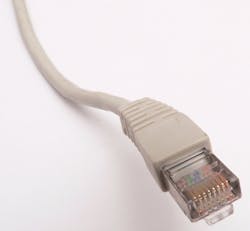How to Choose an Industrial Ethernet Protocol
Aug. 29, 2011
2 min read
As the fieldbus wars of years past continue to be waged on the periphery of industrial automation applications, the battle over which Ethernet protocol to use has moved to the forefront along with the rapid adoption of Ethernet networks in industrial facilities of all types.
Most discussions about industrial Ethernet protocols tend to focus on the protocol supplier’s viewpoint and therefore typically revolve around their protocol’s particular feature/functionality offerings. To get a better understanding of how engineering end users view the Ethernet protocol selection process, Grant Gerke, digital managing editor for Automation World, put the following question to the Automation World LinkedIn discussion forum at http://bit.ly/automationworld: What are the critical factors that help you determine which industrial Ethernet protocol to use?
Doug Brock, an automation engineer at Kendall Electric suggests that engineers not choose a network first. “Choose your controller, then stick with the networks that are best supported by that controller,” he advises.
If the devices and connectivity of the networks your standard controller supports are limited, Brock suggests that you consider switching to a different controller. However, even in cases where existing devices and infrastructure are extensive, Brock still recommends letting the controller drive the choice of network. “Numerous devices allow interoperability and the controller is typically the limiting factor,” he adds.
Another respondent to the question, Johnson Lukose, business manager at Scadatech Engineering, shared his step-by-step method of protocol determination.
The first step, according to Lukose, is to diagram a "bus-agonistic" diagram of the project. Then, based on that diagram, identify all the equipment and nodes that will be connected to the bus or network. Lukose adds that his reference to equipment and nodes can include PLCs, PC-PCI fieldbus cards, remote I/O, VSDs, weighing systems, power measurement systems, bar-code readers, RFID readers, transmitters, etc., even bus-to-bus gateways such as an interfacing device bus.
Once you have your automation system mapped out, Lukose says the next step is to contact all the vendors of the equipment and nodes you use to verify performance, support and pricing. Based on the gathered information, you can then go about selecting the Ethernet protocol to use based on the bus that is most common among the installed equipment and nodes.
Discussion of this topic on our LinkedIn group is still ongoing. Feel free to weigh with your opinion by accessing the discussion directly at: http://linkd.in/ethernetprotocol.
About the Author
David Greenfield, editor in chief
Editor in Chief
David Greenfield joined Automation World in June 2011. Bringing a wealth of industry knowledge and media experience to his position, David’s contributions can be found in AW’s print and online editions and custom projects. Earlier in his career, David was Editorial Director of Design News at UBM Electronics, and prior to joining UBM, he was Editorial Director of Control Engineering at Reed Business Information, where he also worked on Manufacturing Business Technology as Publisher.
Sign up for our eNewsletters
Get the latest news and updates

Leaders relevant to this article:
